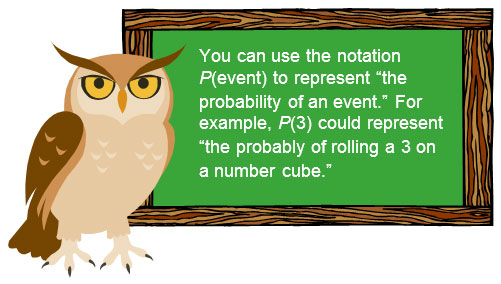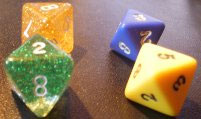
Probability is defined as the ratio of the number of desired outcomes (what you want to happen) to the number of total possible outcomes (what could possibly happen). Probability is a ratio, so it can be expressed as a fraction, a decimal, or a percent.
Probability = number of desired outcomes over total number of possible outcomes Number of Desired Outcomes Total Number of Possible Outcomes

In probability, a simple event is one action or observation. For example, you could roll a six-sided number cube. An event in this situation would be a number landing face up on the number cube. Face up means the number that is showing on the top face of the number cube.
Interactive popup. Assistance may be required.
There are 6 outcomes: 1, 2, 3, 4, 5, or 6 could appear on the top face of the number cube.
![]() Use the interactive below to see a net of a six-sided number cube and how the net can be folded to create a number cube.
Use the interactive below to see a net of a six-sided number cube and how the net can be folded to create a number cube.

Use the six-sided number cube shown in the animation to answer the following questions.
Interactive popup. Assistance may be required.
The desired outcome for this event is a 3. How many ways can a 3 land on the top face of the number cube?
Interactive popup. Assistance may be required.
The desired outcome for this event is an odd number. How many ways can an odd number land on the top face of the number cube?
Interactive popup. Assistance may be required.
The desired outcome for this event is a prime number. How many ways can a prime number land on the top face of the number cube?
How can you determine the total number of outcomes for an event?

How can you determine the number of desired outcomes for an event?

Source: 4d8, Troumad, Wikimedia Commons
Brianna and Desmond use an 8-sided die (which is not a cube, but an octahedron) to play a board game. Each face of the octahedron contains a digit from 1 to 8, and each face of the octahedron is congruent, so each number has an equal chance of appearing on the top face.
Interactive popup. Assistance may be required.
How many even numbers are there on an 8-sided die? How many total outcomes are there?
Interactive popup. Assistance may be required.
How many numbers on the 8-sided die are less than but not equal to 4? How many total outcomes are there?
Interactive popup. Assistance may be required.
How many numbers on the 8-sided die are prime? How many numbers are greater than or equal to 6? How many total outcomes are there?
